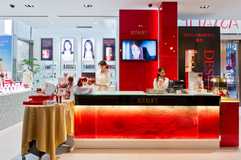Fujifilm / Tokyo
Renewal process
Having seen its film business nosedive thanks to the digital onslaught, Japan’s Fujifilm has found another lucrative avenue – skincare.
It is lunchtime in Tokyo’s expensive Ginza district and women are crowding around an all-red beauty counter in the New Melsa building. Smiling assistants in pussy-cat bows are dispensing advice and a quick swipe of the rose-scented products. Everyone is here for the same thing: Astalift, one of Japan’s top-selling anti-ageing skincare brands.
Astalift has all the elements for success – the baffling nanoscience, the unpronounceable ingredients (Astaxanthin) and the high price tag. The award-winning red packaging is bold, as is the pinkish hue of the products. But what’s most striking about Astalift is that it is made by the camera maker Fujifilm.
Since launch in 2007, Fujifilm’s skin-care brand has enjoyed a fast ascent to the upper echelons of Japan’s trillion-yen skincare market. “Fujifilm made a big impact when it entered the [skincare] market,” says Tomoyuki Yamazumi, a cosmetics industry analyst for the research firm Fuji-Keizai. “It had the financial power plus a strong marketing ability and existing ties to consumers.” By 2010, Astalift sales were already over ¥10bn (€94m) a year. By 2018 the company is looking to increase skincare and supplement sales to ¥100bn a year, with 20 per cent of skincare revenue coming from overseas sales.
Fifteen years ago skincare was not an obvious route for Fujifilm. Back then the company was one of the biggest players in the camera-film business, engaged in a fierce turf war with its main rival, Kodak. The Apple and Samsung of their day, the two were slugging it out – in court at one point – to protect their share of a business then worth fighting for. What happened next was one of the most dramatic collapses in industrial history.
From a global peak in 2000, demand for camera film dropped 90 per cent in 10 years as the digital revolution swept the world. “We’d known it was coming since the 1980s,” says Yojiro Yamashita, general manager of Fujifilm’s life science products division. Maybe so, but few predicted how vertiginous the decline would be. Kodak didn’t make it, filing for bankruptcy last year. Fujifilm not only survived but emerged from the rubble ready to face the modern world with a string of new businesses.
The company, which was founded as Fuji Photo Film in 1934, is proud of its role in the history of photography. At the global headquarters in the smart Tokyo Midtown development, there is a small museum displaying every camera and camera film that Fujifilm has ever produced, including the world’s first high-speed colour film in 1976, the first one-time-use camera in 1986 and the world’s first 3d digital camera in 2009. “Film and film culture are very important for us,” says Fujifilm PR Mizuki Ito. There’s an Astalift shop at HQ too, a sign of changing times at Fujifulm. On a large TV screen, customers can place themselves in the latest Astalift commercial – an intriguing production involving a red spacecraft, an arid desert and the odd flying tomato – alongside the brand’s two faces: 50-year-old singer Seiko Matsuda, once voted the number one Japanese icon of all time, and singer and actress Kyoko Koizumi.
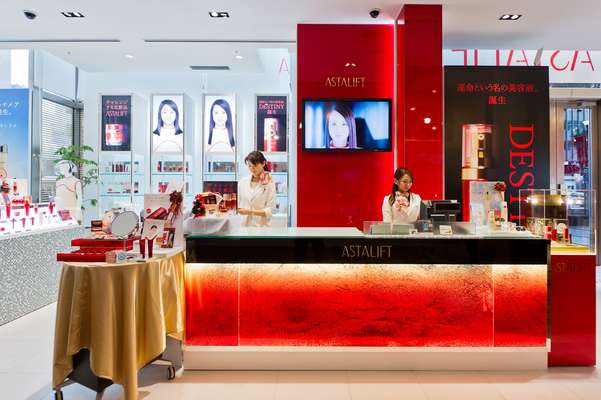

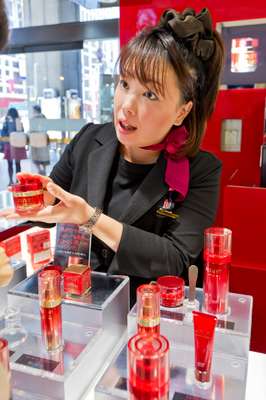
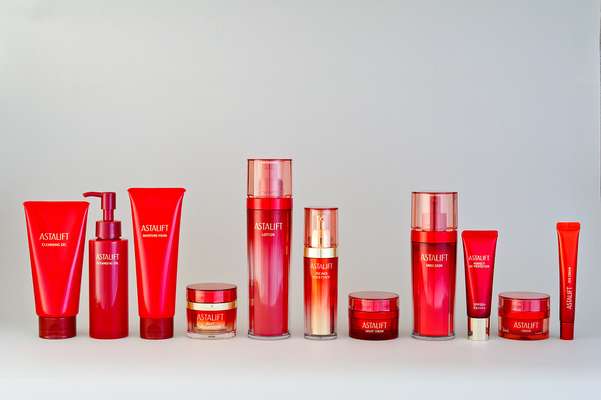
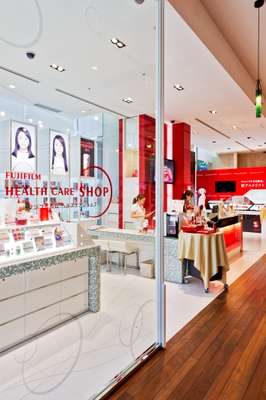
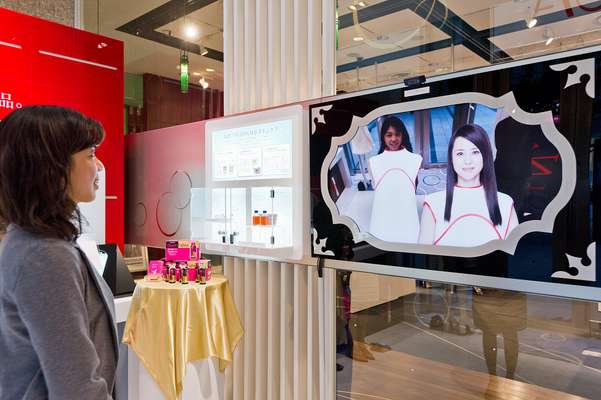

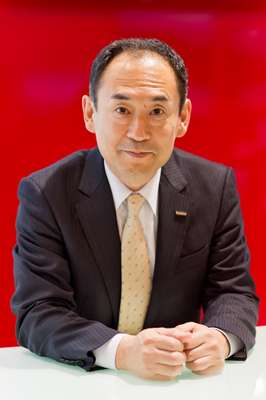
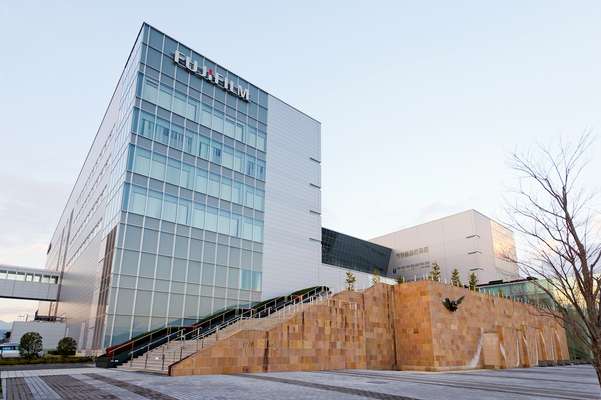
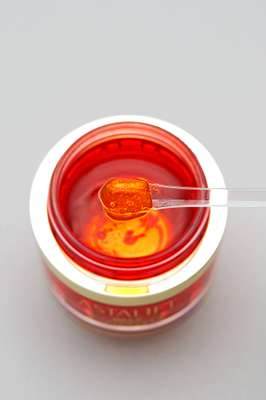

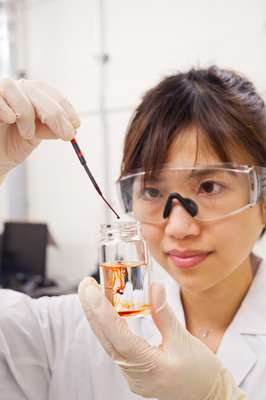

Fujifilm’s prescience that film’s days were numbered is hardly surprising given that it was also responsible for the world’s first digital camera in 1988, a prototype that never made it to production. Fujifilm, it transpires, was the architect of its own looming demise. But, despite the plummeting value of film, the firm devised a comeback plan. Under Shigetaka Komori, who became president in 2000 and ceo in 2003, Fujifilm underwent a radical and distinctly un-Japanese process of structural reform and aggressive acquisition. “We knew we couldn’t survive only by shrinking the business,” says Yamashita. “We had to invest in new directions.”
So Fujifilm looked at the fields to which its existing technology could be adapted and started acquiring companies that would complement what they already did. They moved into digital x-ray and endoscopes; they now have a 70 per cent world market share of tac film, an essential component of all lcd screens. The acquisitions spree has amounted to ¥700bn (€6.5bn) since 2000, including the pharmaceutical company Toyama Chemical. In 2006 it also built a new r&d centre with advanced research labs in Kaisei, a small town south of Tokyo. It’s here that Fujifilm’s technical minds are working on new products for its various businesses.
One area it spotted was what it called “life sciences”, which was set up as a division in 2006. The white coats in the Kaisei research labs knew there was something that camera film technology could be adapted to: skincare. “We were already using collagen [50 per cent of film emulsion is collagen], we knew how to control oxidisation, which is very damaging to film [and to skin] and how to control the way film reacts to light – how to prevent fading. And we have very advanced nanotechnology,” says Yamashita.
In short, it already had the know-how to launch a skincare line – perhaps a natural extension for a brand that’s always made people insecure about how they looked on film. The labs also had a library of 200,000 chemical compounds and 4,000 antioxidant samples. Look at a slice of film in cross section and with its multiple layers it’s not dissimilar to skin. The processes that degrade film – exposure and ageing – and the technology to stop them, have been preoccupying Fujifilm for decades. Unwittingly, in their efforts to perfect film stock the researchers had been laying the groundwork for a skincare business. “We’ve been studying light absorption and reflection on skin for years,” says Yamashita. “We know how to make skin look good.”
When Astalift was launched in September 2007, sales were only by mail order, a low-risk approach that also allowed brand recognition to grow. “There was always a possibility that people might think it was something to do with film chemicals,” says Yamashita. There was an internal discussion about whether or not to flag up the Fujifilm name on the products. “We realised that people might think it was strange that we were making skincare,” says Yamashita, “but we decided that customers trusted the brand.”
Within six months Astalift was being sold in 2,000 shops and the first TV commercials were being broadcast. “We’re not one of the big beauty companies,” says Yamashita, whose job it is to sell the “life science” products. Despite this, the Fujifilm connection was a good talking point and the additional publicity it generated was a bonus. The number of sales outlets quickly rose to 5,000 (and is now at 7,000). The hero product came in 2010. Called Jelly Aquarysta, it’s an antioxidant, triple-collagen-pumped concentrate with the texture of plump jelly. One million jars were sold in Japan within a year. The range has been widened and was refreshed in September with new refill packaging. Last summer the company launched Lunamer, a skincare range for younger women. Overseas sales are a key part of the growth strategy. The first launch outside Japan was China in 2010. “Of course we were attracted by the size of the market,” says Masaya Seki, who is in charge of international marketing. “Demand for skincare is high there.” There was also the similarity in skin types and the established popularity of Japanese products.
“[Asian] trends in cosmetics and particularly skincare – whitening and anti-ageing – start in Japan,” says Fuji Keizai’s Tomoyuki Yamazumi. “And it looks like it will continue that way.” Singapore, Malaysia, Vietnam, Indonesia, Taiwan, Korea and Bangladesh have all followed.
Astalift was launched in Europe last March and is now on sale in the UK, France, Germany, Spain, Italy and Russia. The firm, whose European base is in Dusseldorf, is taking a country-by-country approach in Europe, aware that each market has its own consumer preferences and retail styles.
In the UK, Fujifilm has opted to go with department stores such as Selfridges where a sales assistant can explain the backstory and the products. In Russia it works with a pharmacy chain called 36.6, among others. It’s different again in France where it sells through the likes of the Parfumerie Douglas stores. The US is a nut it has yet to crack. “The marketing structure there is so different,” says Seki. “We have to work with big chains and could be faced with a huge investment relative to the size of the market.”
The breakdown of Fujifilm’s business – expected to be worth over ¥2.2trn (€20bn) this fiscal year – is completely different from 10 years ago. Last year 44.9 per cent of Fujifilm’s business was in “document solutions”, which is where the Fuji Xerox photocopying and printing business comes in; another 40.4 per cent was in “information solutions” – a sector that barely existed a decade ago – which includes phone camera lenses, medical equipment, flat-panel display materials, skincare and supplements. Film, which made up 19 per cent of the business in 2000, now accounts for under 1 per cent.
With smartphones eating into digital camera sales, Fujifilm has been focusing on the higher end of the consumer market with cameras such as the pricey but popular x100. The company announced it will stop production of movie film from this March but insists it won’t abandon camera film. No matter how small a part of the business it forms today, ceo Shigetaka Komori says that film will continue, coexisting alongside the Astalift, the x-ray machines and all the other Fujifilm businesses.
Fujifilm’s aspirations for skincare are high. “We’re trying to do something radical,” says Yojiro Yamashita. “We’re using different technology and have a different marketing approach from other brands.” Japanese women have a complicated skin regime that involves many products. A lower-maintenance international audience might want to skip a few stages. “We can’t expect everyone to use the range in exactly the same way as Japanese women,” says Masaya Seki. “The first step is to get them to hear our story and once they’re convinced we think they’ll use more products.”
Top five skincare/cosmetics firms in Japan:
Japan is the biggest cosmetics market in Asia, with China in second place. The top five in Japan are:
- Shiseido
- Kao
- Kanebo
- Kosé
- P&G
Branching out
Fujifilm is not alone in its bid for diversification. Other companies have been looking to boost revenues by applying their technology to the lucrative skincare and cosmetics market, which research firm Fuji-Keizai says is worth ¥2.2trn a year in Japan. Beverage company Suntory has its own range of supplements and a yeast-based skincare range called F.A.G.E.. Sake brewer Nihonsakari has its own skincare line, Komenuka Bijin, made with rice bran and sake. The frozen food giant Nichirei has a bio-sciences division dreaming up beauty products, and food manufacturer Ajinomoto has created a cosmetics and skincare range called Jino using its amino acid research. “Generally, the profit ratio from skincare is higher than food,” says industry analyst Tomoyuki Yamazumi.

